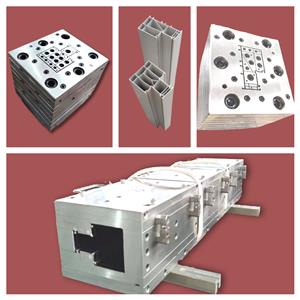Haosen colabora con la Universidad de Nanjing para desarrollar un proyecto tecnológico
Huangshi Haosen Industrial Development Co., Ltd. collaborates with a well-known university in China to develop a technology project. Subject on pollution water drainage pipe project.
The objectives of the project research and the key issues to be addressed:
(1) General research objectives:
In view of the complex and changeable application scenarios of rural sewage treatment projects and the requirements of the new era of synergy of pollution control and carbon reduction, a low-carbon modular decentralized rural sewage treatment technology is developed, and the goal of synergistic improvement of carbon reduction and pollution control goals is achieved through system innovation technologies such as the application of recycled materials in the whole system, the intensive optimization of innovative assembly structures and process systems, new granular humus fillers, and key technologies of low-energy consumption oxygenation and uniform water distribution.
(2) Key problems to be solved:
(1) Modification and molding technology of recycled materials for stock garbage and light materials.
(2) Low-carbon modular agricultural pollution treatment technology and equipment.
The project is a three-step process.
The first step is to study the content of the objectives and the key problems to be solved
(1) Research objectives:
Design and optimize low-carbon modular equipment, including: (1) research on the modification formula and special extrusion mold of recycled materials of existing waste and lightweight materials to achieve stable and high-quality molding of recycled materials; (2) design modular components such as tenon and tenon splicing structures and multi-functional special-shaped plates, and optimize the design through simulation analysis to meet the complex and changeable application needs of rural areas.
(2) Key problems to be solved:
(1) Formula material modification technology and process parameter optimization of recycled plastic molding process.
(2) Modular equipment assembly design and optimization.
The second step is to study the content of the objectives and the key questions to be solved
(1) Research objectives:
Through the development of standardized granular humus biological fillers with high strength, strong blocking resistance and good water resistance, combined with low-energy consumption oxygenation and uniform water distribution technology, the low-carbon agricultural pollution treatment technology is optimized, and the microdynamic and high-efficiency treatment of rural sewage is realized.
(2) Key problems to be solved:
(1) Humus filler with high mechanical strength, strong anti-clogging ability and good water resistance
(2) Low energy consumption oxygenation and uniform water distribution technology.
The third step is to study the content of the objectives and the key problems to be solved
(1) The content of the research objectives
Establish a long-term operation and maintenance management mechanism of the modular system through the remote monitoring platform of the Internet of Things, make engineering prototypes based on structural optimization and technology improvement, put into actual scene operation and inspection, verify the treatment effect and carbon emission reduction benefits, optimize the system process parameters, and improve the processing efficiency.
and (2) the key issues to be solved
(1) System optimization of low-carbon modular agricultural pollution treatment equipment in actual scenarios.
1.4. Research methods, technical routes and feasibility analysis to be adopted by the project:
【Methodology】
(1) Research on low-carbon modular equipment
Guided by the idea of
(2) Modification and molding technology of recycled materials for stock garbage and lightweights. The technology is in charge of Huangshi Haosen Industrial Development Co., Ltd.
(1) Modular equipment structure design and simulation analysis optimization.
Design modular components such as tenon and tenon splicing structure, multi-functional special-shaped plates, etc., with the assistance of computer 3D modeling and simulation analysis software, realize the three-dimensional visual analysis of the design scheme, and carry out the whole process mechanical performance analysis through simulation methods such as finite element analysis, and simulate the stress of each module and module junction of modular equipment under rural operating conditions. Displacement status, evaluate the overall failure risk of the model, optimize the design scheme, reduce the trial and error cost of early development, and improve the research efficiency.
Research on low-carbon agricultural pollution treatment technology
Based on the synergistic goal of pollution reduction and carbon reduction, this study selects appropriate rural sewage treatment processes and optimizes the energy reduction and efficiency improvement of key processes.
(1) Development of granular humus biological filler
The granulating technology was used to granulate the humus soil of the stock garbage, and the hydrogel material with good biocompatibility was selected to coat the particles, and the granular humus filler with high mechanical strength, strong clogging resistance and good water resistance was made, and compared with the self-stabilization ability of the traditional humus filler and the granular humus filler and the treatment effect of sewage, it provided a theoretical basis for the production and application of granular humus filler.
(2) Low-energy oxygenation and uniform water distribution technology
The surface reoxygenation technology of forced ventilation layer is used to replace the underwater blast aeration technology, which reduces the energy consumption of oxygenation by more than 90%. Combined with the small head uniform water distribution technology, it solves the problem of uneven flow out of the orifice of the water distribution tank and easy blockage of the orifice, and achieves the effect of low energy consumption and high efficiency of micro-power.
(3) Build a long-term management system based on remote monitoring technology of the Internet of Things
In the face of the lack of professionals in rural areas and the low level of operation and management, the stability and reliability of the remote monitoring platform of the Internet of Things are used to carry out centralized management and statistical analysis of process-related data, so as to realize the intelligent control, data resource, accurate management and intelligent decision-making of the rural sewage treatment system.





